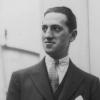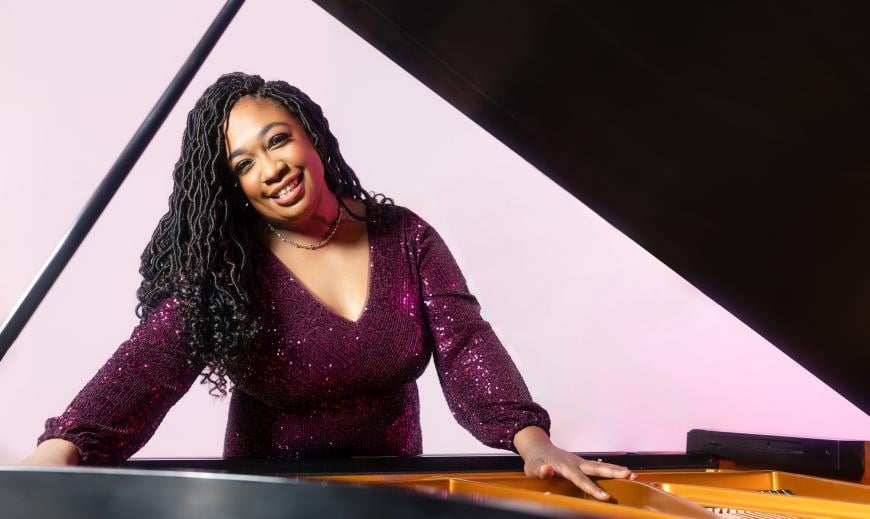
In 2016, Michelle Cann was invited to perform the New York premiere of Florence Price’s Piano Concerto in One Movement. Cann was shocked she hadn’t previously heard of Price, the first Black woman to have a composition presented by a major American orchestra (the Chicago Symphony, which performed Price’s Symphony No. 1 in E Minor in 1933).
Now, Cann is one of the most prominent performers of Price and has released three albums featuring her music, covering solo repertoire (2023’s Revival), chamber music (2022’s Uncovered, Vol. 2 with the Catalyst Quartet), and that one-movement piano concerto (a 2022 recording with the New York Youth Symphony).
Cann makes her San Francisco Symphony debut Oct. 25–26 with conductor Thomas Wilkins in a program spotlighting George Gershwin’s Rhapsody in Blue, along with music from Porgy and Bess, a suite from Leonard Bernstein’s Candide, and William Grant Still’s Wood Notes.
During a break between classes at the Curtis Institute of Music in Philadelphia — she also teaches at Manhattan School of Music — Cann talked with SF Classical Voice about how major orchestras set an example with their programming, why she plays Rhapsody in Blue differently every time, and the mixed feelings she had when she first heard Price’s music. This conversation has been edited for concision and clarity.
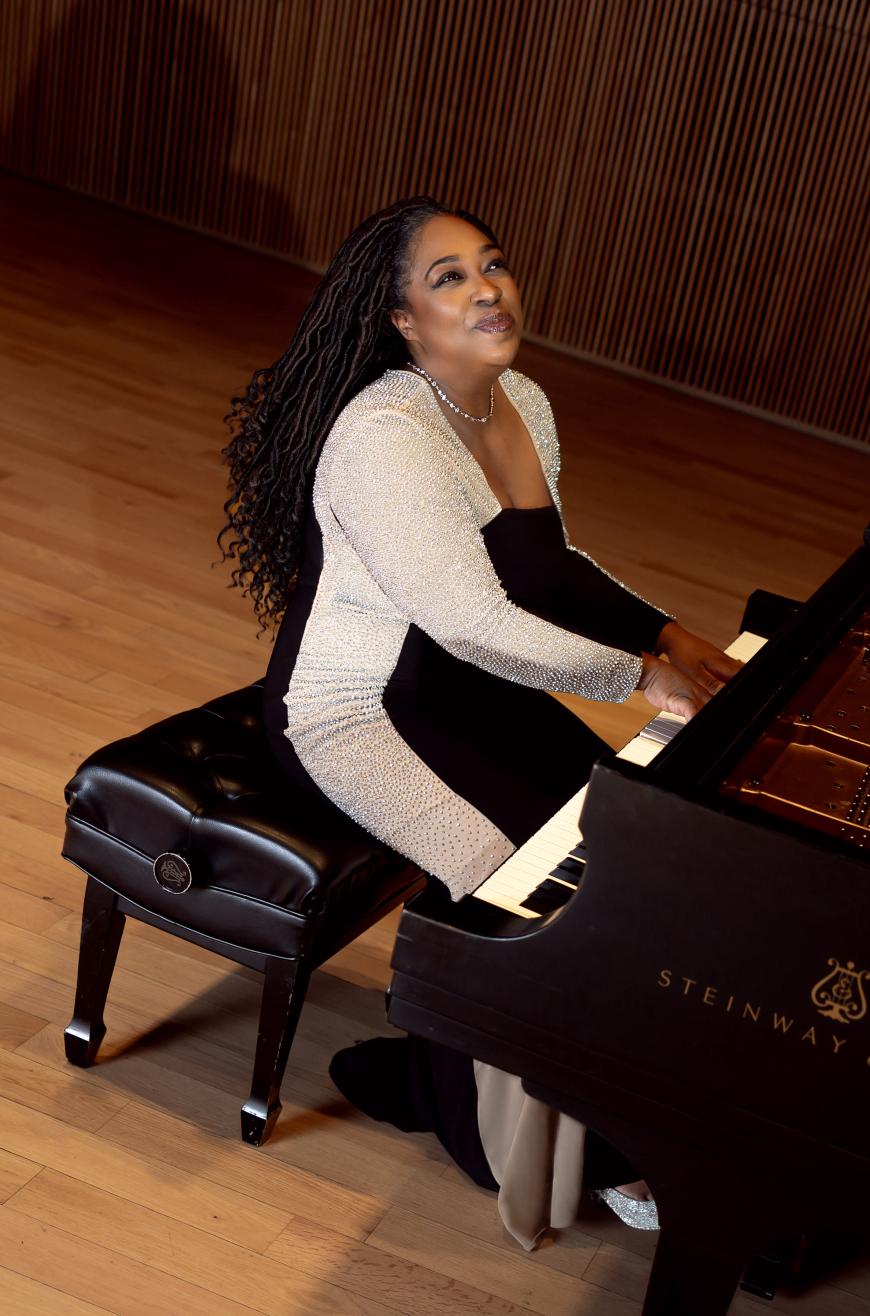
You have a busy schedule performing while also teaching at two conservatories. What keeps you teaching?
Teaching, it’s always been part of my life, and I literally can’t imagine it not being there. My father just retired this year, but he’s been a K-through-12 music educator for his whole career. We grew up being in every ensemble that he directed, my sister and me. I was singing in the choir. I was playing in the band as a trombone player and even a tuba player when my dad needed a tuba player. My mother is a high school biology teacher, so we grew up in a family of educators. The pinnacle of that aspect of my life, which I’ve always enjoyed, is to be fortunate enough to be on the faculty of two really great conservatories and be able to attract some really top students.
Growing up, you played the steel drums, as well as trombone and tuba. Why did you land on piano?
I was 6 when I started, and I just really enjoyed expressing myself through piano. We were a very musical family, and we had these multiple instruments. But no matter what you do, you’re going to have to eventually focus more intensely on one thing, right? For me, it became clear that piano was going to get the most hours of practice.
I also took violin, and I got to play in youth orchestra, which I loved. I think one of the reasons I love soloing with orchestras is that I spent time being a violinist. And I’ve always loved orchestral music. Even though now it’s from a different vantage point, I just feel like I’m part of it all.
Critics use words like “bold” and “dynamic” to describe your playing. Do you feel those adjectives capture something about you, that you play with confidence?
What I can say is that any music that I play, I experience it in a very real and organic way. I feel that I am easily able to get into the zone, get into this space and this energetic place where all cylinders are firing. I feel that live performance especially gets me there, and I’m fueled by it. I’m inspired by the other musicians onstage. I’m inspired by the conductor. I’m inspired by the audience that’s out there with me, and I get into that space sort of immediately.
I read somewhere that you said you were smitten after being asked to play Florence Price’s Piano Concerto in One Movement for the first time. Why was that?
It was a mix of the music itself but also the shock of like, “Wait, this is really good, and I’ve never heard of this lady, either as a pianist or a composer.” I just didn’t know who she was. I had been given a little bit of information, simply that [the concerto] was written by this Black composer in the 1930s. I have to be honest, my initial inclination was to assume that it really wasn’t that strong of a piece. I’m interested in Black composers, and I’m a professional in this field, so I thought I definitely would have heard of this. I thought there was just no way I wouldn’t even know her name if it was good music.
I told the person who contacted me, “Well, send me the music because I’m not sure.” When I got it, I sat there, and I read through it. I was intrigued [by] the first [section]. I was like, “Oh wow, it’s a really beautiful melody.” But then I got to the second section, and this was literally the most gorgeous writing ever. I just remember reading through it, playing through all these different luscious chords and harmonies and these beautiful spiritual melodies. And then the last section reminds me of ragtime. It’s so infectious and fun.
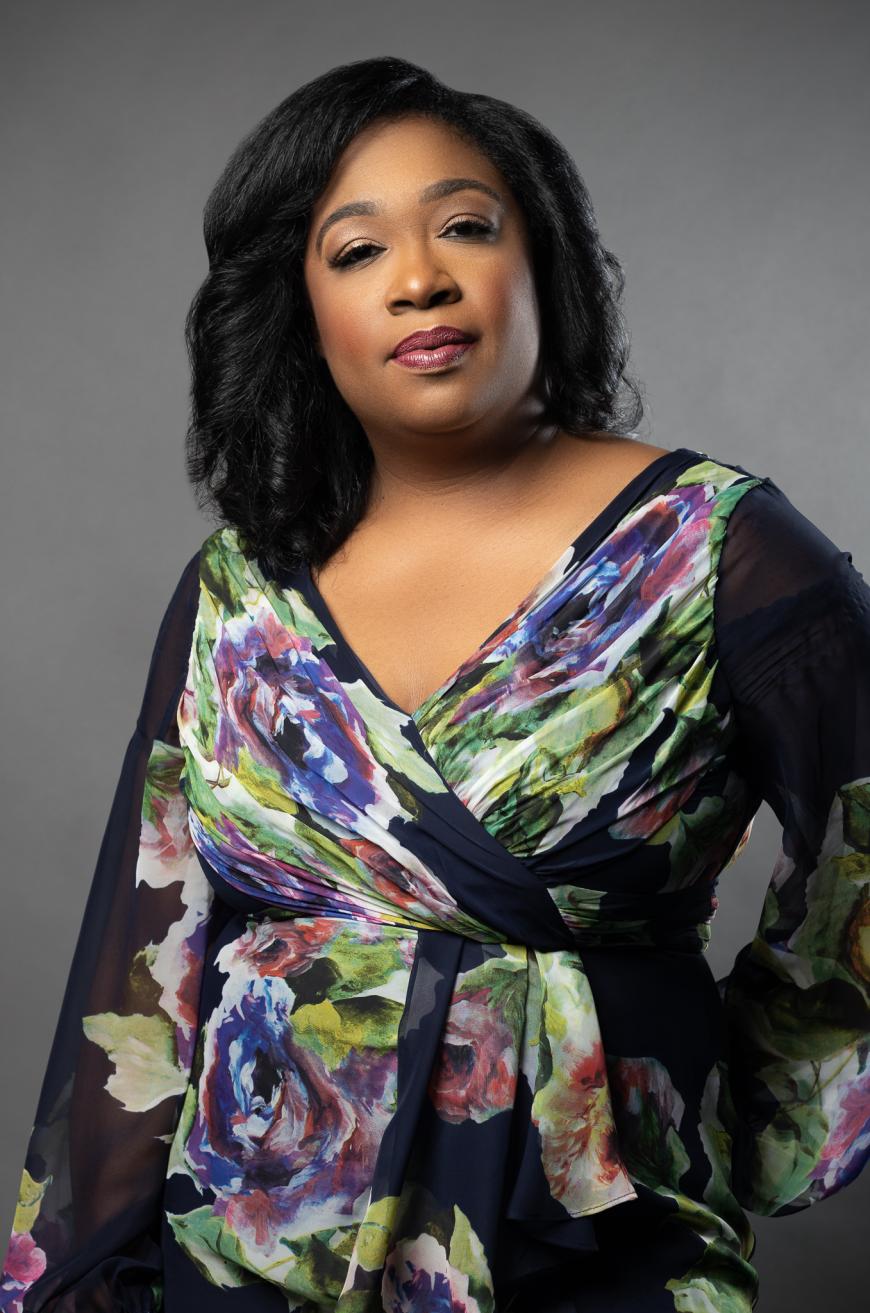
It was mixed emotions because I was excited about how good it was but then I felt just robbed. I felt very confused. I remember being really hungry to know more. I started Googling [Price], and I found that there was a book written by [musicologist] Rae Linda Brown, The Heart of a Woman, and I ordered it. I was reading it, and I just thought, “Oh my goodness, she’s so fascinating.” [Price] actually went to a conservatory that I auditioned at, that I got into, that I thought of going to at one point. This was absolutely crazy. How was she the first woman to ever have a symphony performed by a major orchestra like the Chicago Symphony? How was somebody who could do all those things not even known at all?
It’s not much of a stretch to say that when I look around, it’s not like I see Black pianists everywhere in classical music. The whole point is that the numbers are smaller than they should be in our field, and I definitely should have known about [Price]. I deserved to be inspired by her.
So how did you start playing her music?
It certainly became a mission for me. I told my manager at the time, “I want to start programming her stuff.” Thankfully, Yannick [Nézet-Séguin, music director of The Philadelphia Orchestra] was really the biggest catalyst for me because during COVID, [his orchestra] was doing digital performances. Everybody had time on their hands, and I think he started reading about her and, like me, became a fan and then wanted to program her music. I was in Philadelphia, and he wanted me to do the Concerto in One Movement. Once that was released on a very visible stage, the rest is history. Up until that moment, I don’t think any major orchestra had really done that concerto yet.
This is a perfect example. I feel like it’s a reminder of why it’s so important for the gatekeepers — the orchestras we look up to, the teachers we look up to, the schools we look up to — to set these kinds of examples. Everybody’s following what they see from the top. If the New York Philharmonic’s doing it, if the San Francisco Symphony is doing it, if all these symphonies start to say, “Hey, we love this composer,” guess what? Now we want to do it. Yannick started to promote her because he believed in her music, and what he did for her was huge.
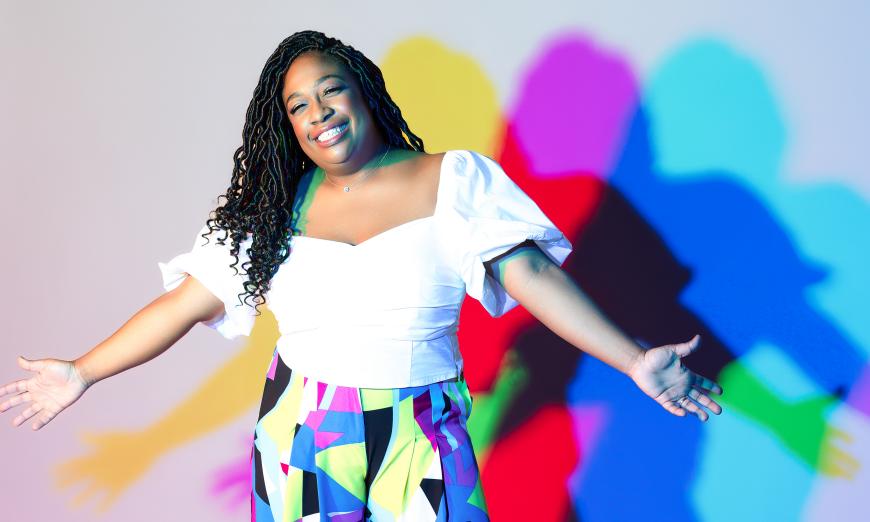
This is your first time at the SF Symphony. Why did you pick Rhapsody in Blue? What do you like about the piece?
Oh man, what don’t I like? You know, it’s fabulous. It’s a piece everyone knows, and for a good reason. The melodies are so contagious, and Gershwin knew how to write for piano. He knew how to write really popular, fun music. He was just a phenomenal composer.
But I think what’s so fun about it is that when I play it — this is intentional on my part, and it gets noticed — people say, “You never play it the same way.” And I say, “I can’t. I absolutely can’t because it is a jazz concerto.” I’ve got to find a way to do what a jazz musician would be doing, and a jazz musician would be spontaneous. A jazz musician would improvise and add things and live in the moment in ways that sometimes we as classical musicians don’t. We have to follow the rules, and they have the freedom.
So I just feel like what makes it fun for me is to find the balance between those two worlds. Yes, I’m reading the notes on the page, but I could bend them a little. I could add a few extra here and there. I could change up the tempo, and that’s what I do — a lot of it’s on the spot. I have to say, it keeps it fresh and keeps it fun, especially for me. I don’t ever want to perform this piece and have it feel stale. I want every person that hears me play it to feel like they’re hearing it for the first time.



